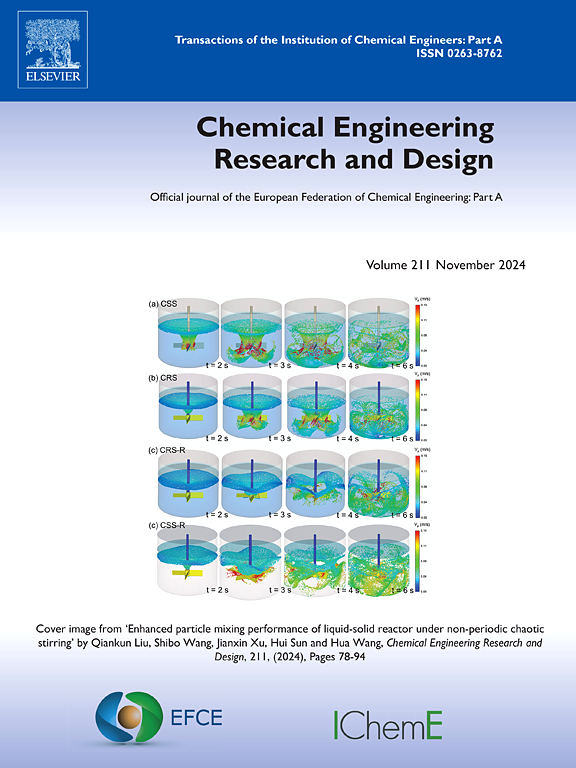Donnan dialysis-based approach for reclamation of waste acid with a low concentration
IF 3.7
3区 工程技术
Q2 ENGINEERING, CHEMICAL
引用次数: 0
Abstract
This study provides a proof-of-concept investigation into the direct utilization of low-concentration recovered acid as a proton source for the efficient recovery of organic acids via Donnan dialysis, a scenario of particular significance in industrial parks. A primary objective is to examine the implications of waste acid concentration on the coupling process. To evaluate the technological feasibility, process simulations are performed utilizing a mathematical model grounded in the Nernst-Planck equation and associated equilibrium relationships. Furthermore, a variety of experimental conditions, encompassing different types of organic acids and varying concentrations of waste acid, are explored to analyze the ion substitution behaviors involved. The findings from both simulations and experiments indicate that weaker organic acids demonstrate superior performance, particularly regarding recovery rates and process efficiency. Additionally, it is revealed that merely increasing the concentration of the draw solution does not constitute an effective approach for improving the DD-based organic acid recovery process, thereby suggesting the potential for the direct application of low-concentration recovered acid. Given its significant advantages, the proposed DD-based coupling technology shows considerable promise for future applications.
基于唐南透析的低浓度废酸回收方法
本研究对直接利用低浓度回收酸作为质子源,通过唐南透析高效回收有机酸进行了概念验证调查,这在工业园区中具有特别重要的意义。首要目标是研究废酸浓度对耦合过程的影响。为了评估技术可行性,我们利用基于 Nernst-Planck 方程和相关平衡关系的数学模型进行了工艺模拟。此外,还探讨了各种实验条件,包括不同类型的有机酸和不同浓度的废酸,以分析其中的离子置换行为。模拟和实验结果表明,较弱的有机酸表现出更优越的性能,尤其是在回收率和工艺效率方面。此外,研究还发现,仅仅提高汲取溶液的浓度并不能有效改善基于 DD 的有机酸回收工艺,这表明低浓度回收酸具有直接应用的潜力。鉴于其显著优势,拟议的基于 DD 的耦合技术在未来的应用中大有可为。
本文章由计算机程序翻译,如有差异,请以英文原文为准。
求助全文
约1分钟内获得全文
求助全文
来源期刊

Chemical Engineering Research & Design
工程技术-工程:化工
CiteScore
6.10
自引率
7.70%
发文量
623
审稿时长
42 days
期刊介绍:
ChERD aims to be the principal international journal for publication of high quality, original papers in chemical engineering.
Papers showing how research results can be used in chemical engineering design, and accounts of experimental or theoretical research work bringing new perspectives to established principles, highlighting unsolved problems or indicating directions for future research, are particularly welcome. Contributions that deal with new developments in plant or processes and that can be given quantitative expression are encouraged. The journal is especially interested in papers that extend the boundaries of traditional chemical engineering.
 求助内容:
求助内容: 应助结果提醒方式:
应助结果提醒方式:


